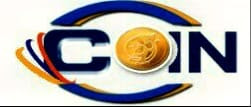VMware ESX and
ESXi 4.0 Comparison
|
Capability
|
VMware ESX
|
VMware ESXi
|
|
Service
Console
|
Service
Console is a standard Linux environment through which a user has privileged
access to the VMware ESX kernel. This Linux-based privileged access allows
you to manage your environment by installing agents and
drivers and executing scripts and other Linux-environment code.
|
VMware
ESXi is designed to make the server a computing appliance. Accordingly,
VMware ESXi behaves more like firmware than traditional software. To provide
hardware-like security and reliability, VMware ESXi does not support
a privileged access environment like the Service Console for
management of VMware ESXi. To enable interaction with agents, VMware has
provisioned CIM Providers through which monitoring and management tasks –
traditionally done through Service Console agents – can be performed. VMware
has provided remote scripting environments such as vCLI and PowerCLI to allow
the remote execution of scripts.
|
|
CLI-Based
Configuration
|
VMware
ESX Service Console has a host CLI through which VMware ESX can be
configured. VMware ESX can also be configured using vSphere CLI (vCLI).
|
The
vSphere CLI (vCLI) is a remote scripting environment that interacts with
VMware ESXi hosts to enable host configuration through scripts or specific
commands. It replicates nearly all the equivalent COS commands for
configuring ESX.
Notes:
|
|
Scriptable
Installation
|
VMware
ESX supports scriptable installations through utilities like KickStart.
|
VMware
ESXi Installable does not support scriptable installations in the manner ESX
does, at this time. VMware ESXi does provide support for post installation
configuration script using vCLI-based configuration scripts.
|
|
Boot
from SAN
|
VMware
ESX supports boot from SAN. Booting from SAN requires one dedicated LUN per
server.
|
VMware
ESXi may be deployed as an embedded hypervisor or installed on a hard disk.
In most
enterprise settings, VMware ESXi is deployed as an embedded hypervisor
directly on the server. This operational model does not require any local
storage and no SAN booting is required because the hypervisor image is
directly on the server.
The
installable version of VMware ESXi does not support booting from SAN.
|
|
Serial
Cable Connectivity
|
VMware
ESX supports interaction through direct-attached serial cable to the VMware
ESX host.
|
VMware
ESXi does not support interaction through direct-attached serial cable to the
VMware ESXi host at this time.
|
|
SNMP
|
VMware
ESX supports SNMP.
|
VMware
ESXi supports SNMP when licensed with vSphere Essentials, vSphere
Essential Plus, vSphere Standard, vSphere Advanced, vSphere Enterprise,
or vSphere Enterprise Plus.
The free version of VMware ESXi does not support SNMP. |
|
Active
Directory Integration
|
VMware
ESX supports Active Directory integration through third-party agents
installed on the Service Console.
|
VMware
ESXi does not support Active Directory authentication of local users at this
time.
|
|
HW
Instrumentation
|
Service
Console agents provide a range of HW instrumentation on VMware ESX.
|
VMware
ESXi provides HW instrumentation through CIM Providers. Standards-based CIM
Providers are distributed with all versions of VMware ESXi. VMware partners
include their own proprietary CIM Providers in customized versions of VMware
ESXi. These customized versions are available either from VMware’s web site
or the partner’s web site, depending on the partner.
Remote
console applications like Dell DRAC, HP iLO, IBM RSA, and FSC iRMC
S2 are supported with ESXi.
|
|
Software
Patches and Updates
|
VMware
ESX software patches and upgrades behave like traditional Linux based patches
and upgrades. The installation of a software patch or upgrade may
require multiple system boots as the patch or upgrade may have dependencies
on previous patches or upgrades.
|
VMware
ESXi patches and updates behave like firmware patches and updates. Any given
patch or update is all-inclusive of previous patches and updates. That
is, installing patch version “n” includes all updates included in patch
versions n-1, n-2, and so forth.
Furthermore, third party components such as OEM CIM providers can be
updated independently of the base ESXi component, and vice versa.
|
|
VI Web
Access
|
VMware
ESX supports managing your virtual machines through VI Web Access. You
can use the VI Web Access to connect directly to the ESX host or to the
VMware Infrastructure Client.
|
VMware
ESXi does not support web access at this time.
|
|
Licensing
|
||
|
Diagnostics
and Troubleshooting
|
VMware
ESX Service Console can be used to issue commands that can help diagnose and
repair support issues with the server.
|
VMware
ESXi has several ways to enable support of the product:
|
|
Jumbo
Frames
|
VMware
ESX 4.0 fully supports Jumbo Frames.
|
VMware
ESXi 4.0 fully supports Jumbo Frames.
|
